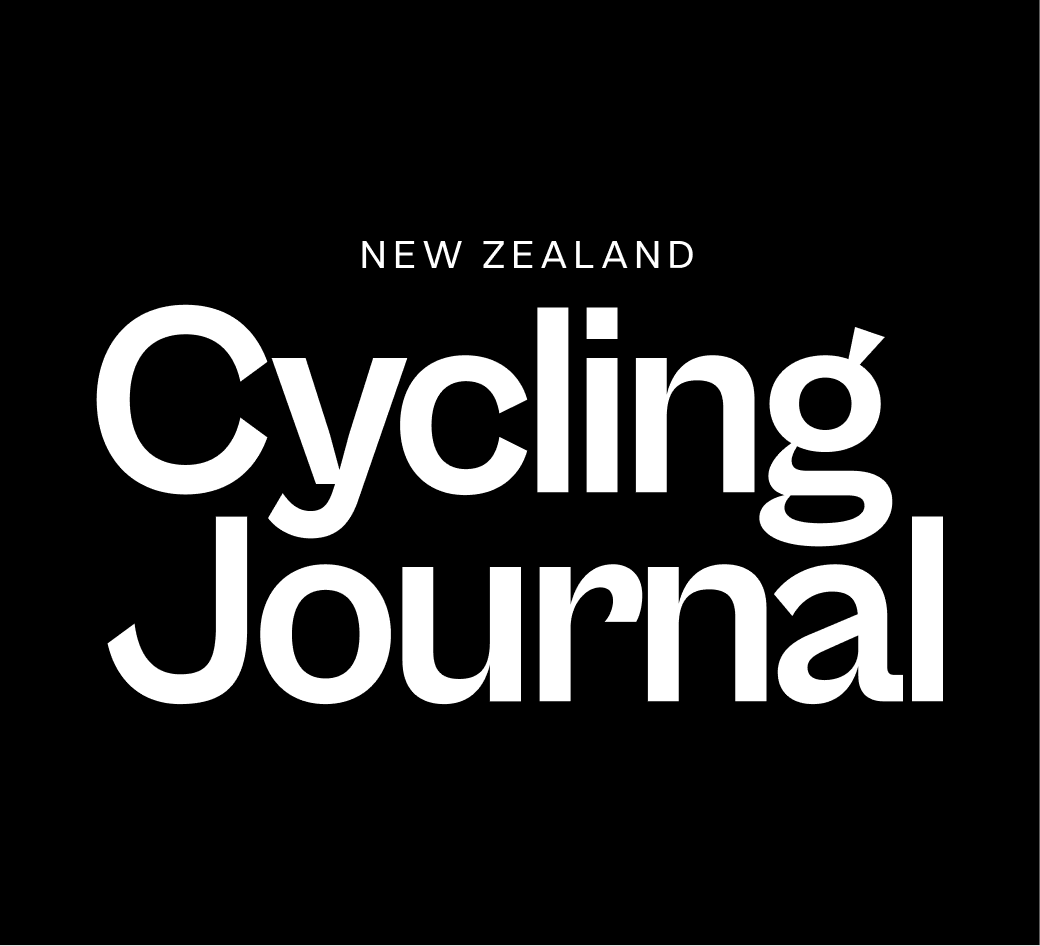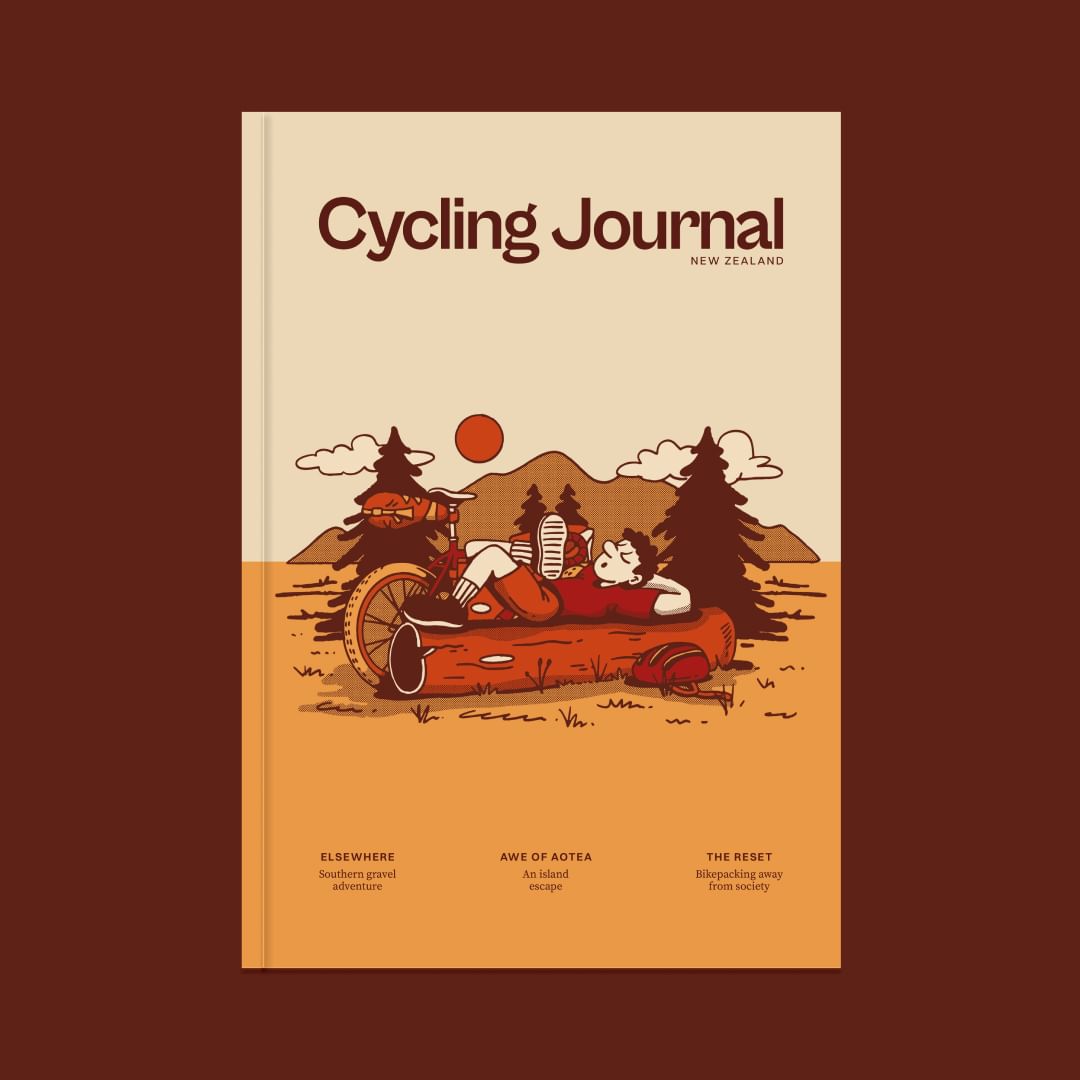Words Lester Perry
Images Finlay Woods & Sam Baker
How the collision of illness, art, and bikes changed the course of Sam Baker’s life.
From afternoons spent scouring roadside inorganic collections, either for parts or entire bikes, to digging jumps in the back paddock, Sam Baker’s childhood was pretty ordinary for a Kiwi kid in the late 90’s. His earliest years are but a puzzle piece of the guy known as ‘Sam’ to many, ‘Baker’ to others, and ‘Vacation Studio’ to the many brands he now works alongside. Needless to say, the journey of life from those early days in his backyard of Waimauku, to now living in Wanaka, creating graphics and art for many current ‘it’ brands, is a great yarn. Even after knowing Sam for a long while, it’s only now, after working on this feature, that I’ve filled in the blanks and can see how he has ended up doing what he does and where he does it. None of it was by accident, apart from a few pivotal years of illness – but we’ll get to that part of the story.
Raised on a ten-acre block of land in Waimauku, 45 minutes north west of Auckland, Sam’s school and friends were a car drive away, so he and younger brother Zach spent their days racing each other aboard their latest inorganic collection Frankenbikes, unwittingly laying the foundation of their riding skills. With Riverhead forest on their doorstep, the brothers’ lust for playing on their bikes drew them to the area’s notorious trails. “Good in the summer, horrendous in the wet, I kind of just grew up riding there. I was on a 16 inch BMX bike until I was probably 13. That’s all we had. We would just go into the forest on these back-brake only bikes and just bomb huge chutes. And it was pretty wild.”
Aaron Fernandez, now owner of Alta stores in Queenstown, was a key figure in downhill racing in the Auckland area, and a friend of Sam’s father. Seeing how keen he was on riding, he encouraged Sam to broaden his horizons by taking on the Auckland Downhill Series. Now on a larger, better suited bike, a Kona Scrap hardtail, Sam dipped his toe into racing across the Auckland region and so began his journey towards a full-blown bike addiction.
Competition between the brothers helped refine their strengths on the bike. “Especially when we were doing jumps, one of us was learning tricks and stuff, or maybe more style-based; Zach was always way more naturally styley, but I was probably more ballsy, doing bigger stuff. One of us would always be wanting the other person’s (attributes). I could do a bigger jump, but he would do it way nicer, and I was always really angry that he could do it way nicer than me. Then he was angry that I could go bigger or something. The jumps we were building were so sketchy because dad wasn’t building them, it was just me and Zach, a hammer and a couple of nails. And it would be a huge piece of ply with four nails at the top, it would sort of flex like crazy and just springboard you into the air! I look back now (and think) how did mum let it happen? But it was pretty good really, it kind of teaches you to ride anything.”
With access to a digger, the brothers built trails in the yard, eventually building a monstrosity of a pump track. “It was probably like an acre of a pump track. We would just go and add lines that had every possible line option. It was a pretty perfect place to grow up. And I think with it being wet 70% of the time, I look back and I’m kind of thankful for all those wet days because now I love riding in the wet. It’s the best! Whereas generally people kind of hang up the bike for winter.”
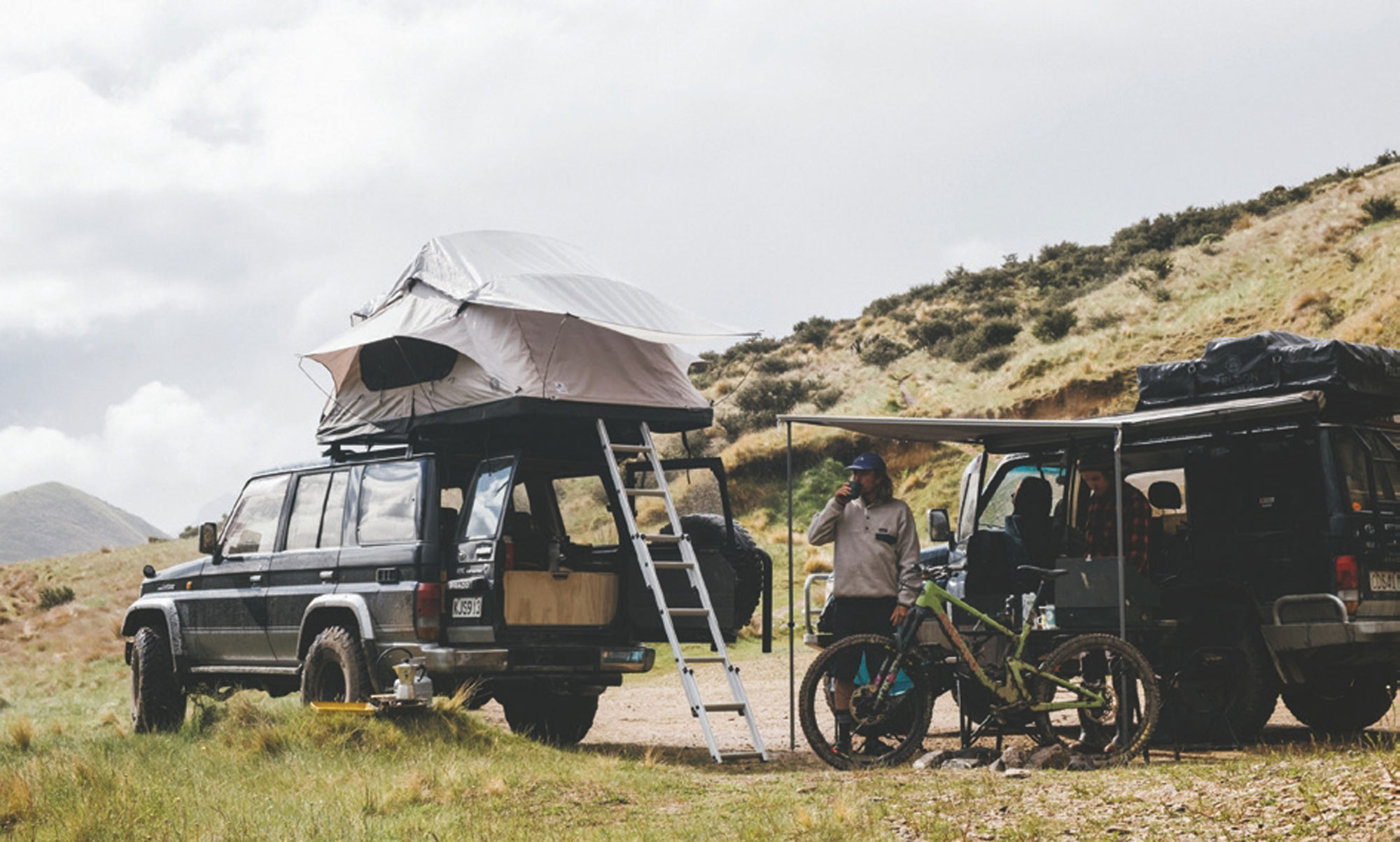
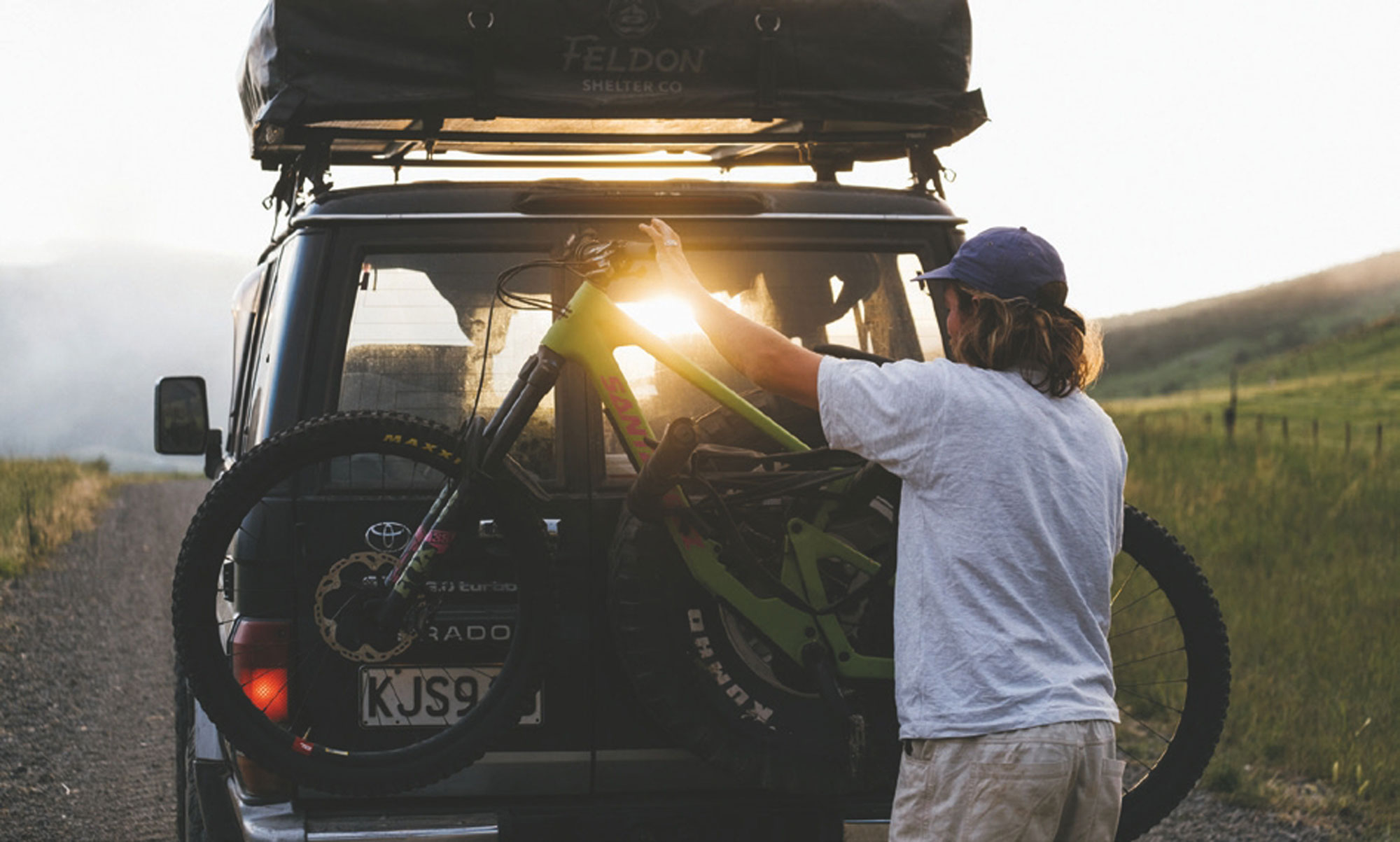
His earliest years are but a puzzle piece of the guy known as ‘Sam’ to many, ‘Baker’ to others, and ‘Vacation Studio’ to the many brands he now works alongside.
With the boys now keen on racing, their next port of call was the infamous Levin Secondary Schools MTB Champs, a three-day competition that drew riders from around the country. They pitted themselves against each other in uphill, downhill, and cross- country, usually using the same bike across the disciplines. This became an annual trip for the Baker family through the high school years. The excitement of racing his peers ramped things up a notch and, after a second place at SS Champs, Sam secured his first sponsor: Bruno at Cyclexpress who helped him to throw his leg over his first proper downhill bike, the iconic Ironhorse Sunday.
By 2007, Sam and Zach had caught the downhill fever. With parents in tow, what was previously their yearly trip to Levin was now a full national race series trip. “We just dove straight into it, really, we went and just did the full series first crack. That was our family holiday. The olds just bought a tent and the whole family just camped for like six weeks or whatever it is, down around the whole South Island, just doing the races. I was maybe 16 or 17 when I first did a national series, and I did it every year until 2012, just driving around.”
Sam was selected for the NZ team during his first year in the U19 category in 2009, hoping to represent NZ in Canberra a few months later at the World Champs. Unfortunately, soon after selection, Sam crashed and broke his wrist. With theoretically enough time to recover before Canberra, he set to work making the most of a bad situation. “I was just hedging all my bets on Worlds in Canberra that year. It was a pedally track, and that certainly wasn’t my forte, and I ended up having another huge crash there. My first year under 19 wasn’t what I was hoping it would be; I missed going over to Europe and doing the full trip and everything. I kind of was just sitting at home with a cast training for Canberra, really.”
Putting his lacklustre 2009 season behind him, in 2010 Sam headed for an entire season in Europe, hoping the trip would be a step towards World Cup domination or at least some decent performances. It shaped up to be another year of discontent. “I met Josh Bryson in 2008 (Josh went on to be a high- profile pro) when he came over with his family and did a New Zealand series here. So we’d stayed in contact, and then that was our base initially. We flew into Manchester and stayed with Josh for ten days or so. We used his driveway to build out the van we’d brought, he’d given us a car to go and look at vans and stuff, and we’d go riding with him at the local woods around there, which is pretty sick. Looking back now to see where he’s come from, what he’s done and where he’s gone, is pretty sweet.”
By 2013, and with World Cup MTB dreams behind him and degrees underway, riding was taking a back seat and, unfortunately, so was his health.
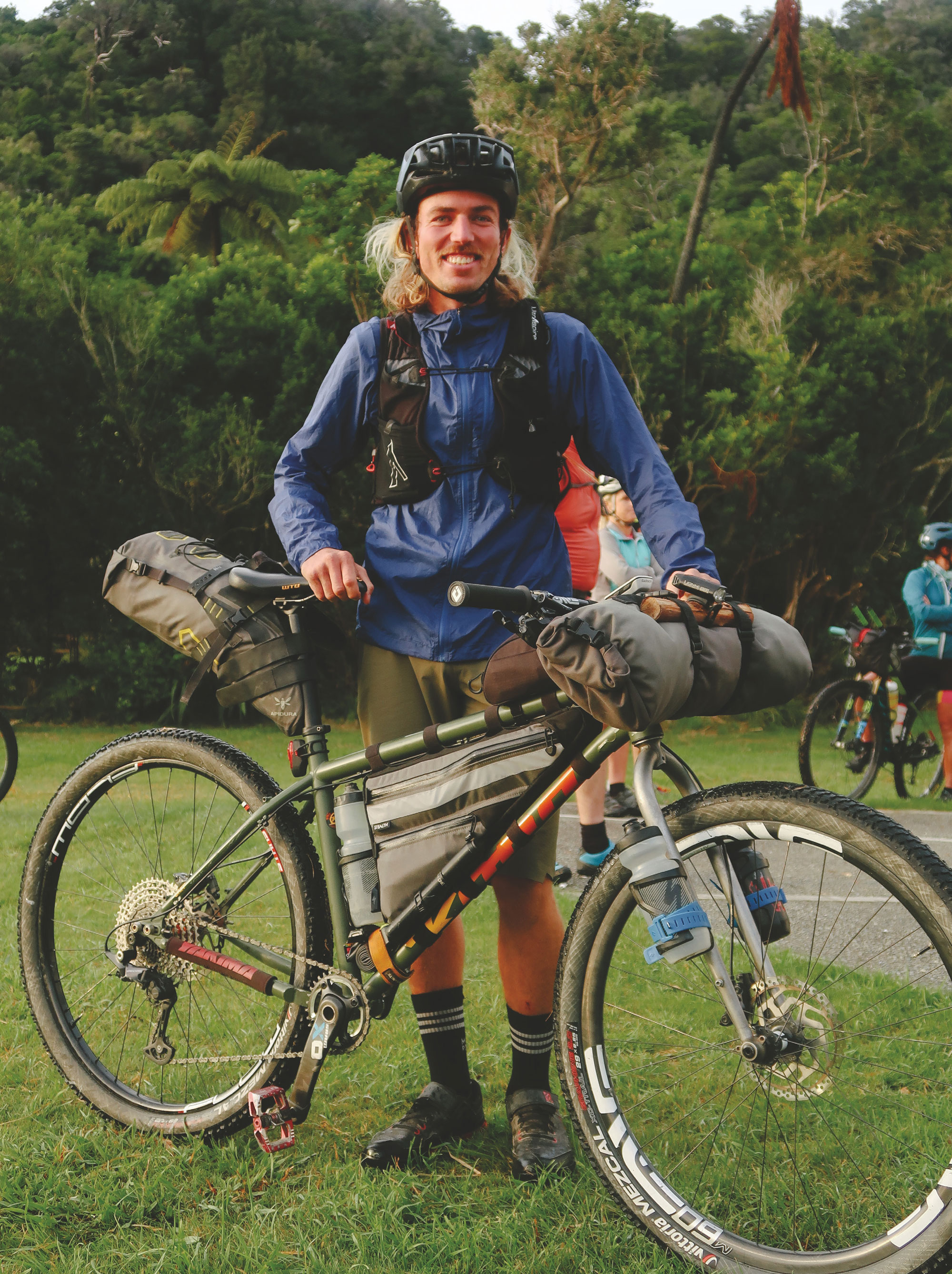
“We were there for maybe three months, we got an apartment in Morzine, based ourselves there, and kind of just picked and chose a few races around and did all the World Cups we could. I remember the first one being Fort William, and that was just so eye-opening, dropping straight into this famous, huge, rough track. Just so stark in comparison to what we have in New Zealand.”
“It was an experience of a lifetime, and I loved it, but I was just at a bit of a crossroads. Like, do I go to Uni? Do I chase it for another year? It took me ages to decide, but in the end, I was like, I’ll go to Uni and get that out of the way, then I can always come back to bikes. It’s kind of crazy; over that time at Uni, the whole mountain bike world sort of changed. There wasn’t enduro racing; there wasn’t any of that stuff back then. Enduro was taking off, and that seemed way more appealing. The travel aspect of enduro, going into different, more backcountry areas, is a bit more exploratory as opposed to just flat-out downhill race runs. I wanted to do that way more.”
“I wish I could go back and do it again, but I’d teach myself to actually do a job. If I were to talk to my son or something, I’d be like, ‘be something’. Be an engineer or something. I just went and studied marketing; I studied a subject that just evolves and changes so much. I’d always done art and design at school, and I kind of was thinking, oh, you’re in marketing. You’ll be like, the creator of the ads. You’ll be able to make some cool stuff. But marketing just grooms you to be a sales rep, which is not what I wanted to be. In the end, it was great for the experience and developing as a person. The biggest thing Uni did for me was shape me as a person.
It narrowed down what I liked and what I didn’t because, coming out of school, I still didn’t know the world. It’s pretty hard to get out of school and choose what you want to do. For me, it was all about bikes at the time. Then I had this other side of me, which was always into making stuff. It was my first time fending for myself, and that kind of aspect of Uni was good, but actually coming out of it with a marketing degree – maybe not so much. I did marketing and economics, majored in both, but haven’t used it since.”
By 2013, and with World Cup MTB dreams behind him and degrees underway, riding was taking a back seat and, unfortunately, so was his health. A trip to the bathroom one day resulted in Sam spotting blood in his stool, the first symptom of his Crohn’s disease and a crucial turning point for everything in Sam’s life.
“At the time, all you think of is, is that cancer? What is that? You’ve got no idea. And it took them quite a while to figure out what it was. I went and saw people; whatever they initially thought it was, it wasn’t. There’s Crohn’s and ulcerative colitis, which are virtually identical symptoms but have vastly different treatments, which is a pain. So they were treating me for ulcerative colitis, which is kind of curable, I guess, whereas Crohn’s is incurable.”
For the next couple of years, Sam underwent treatment, surfing waves of feeling okay, almost normal, then having flare-ups. The disease sapped his energy to the point of being bedridden. “Your body’s fighting this internal battle. It’s like an autoimmune disease, Crohn’s, and so your body is just sending all these white blood cells and pretty much running your body down while trying to fight this imaginary disease. It’s like it’s attacking your digestive tract, basically thinking that the digestive tract is a virus, and it just eats your insides out.”
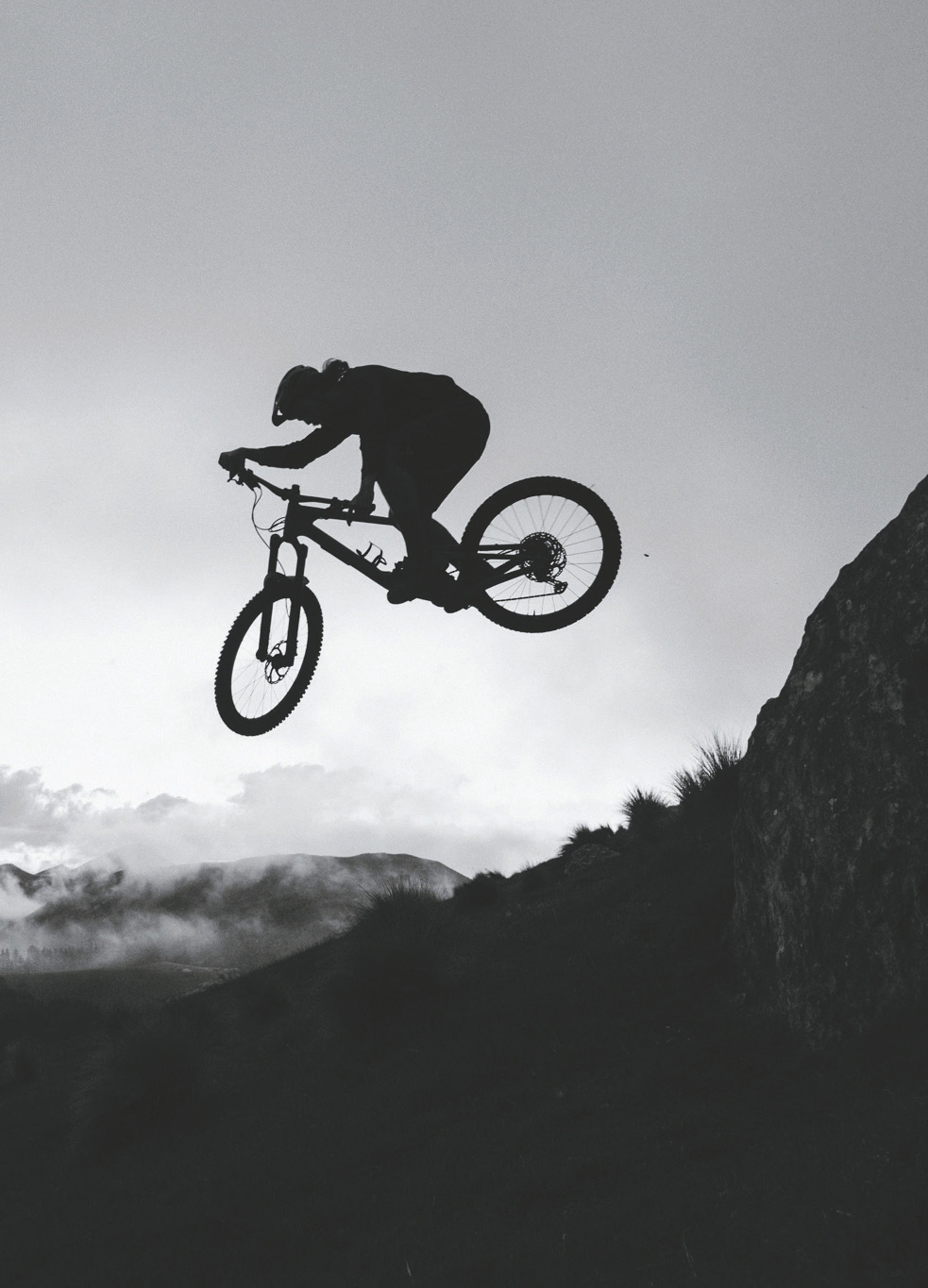
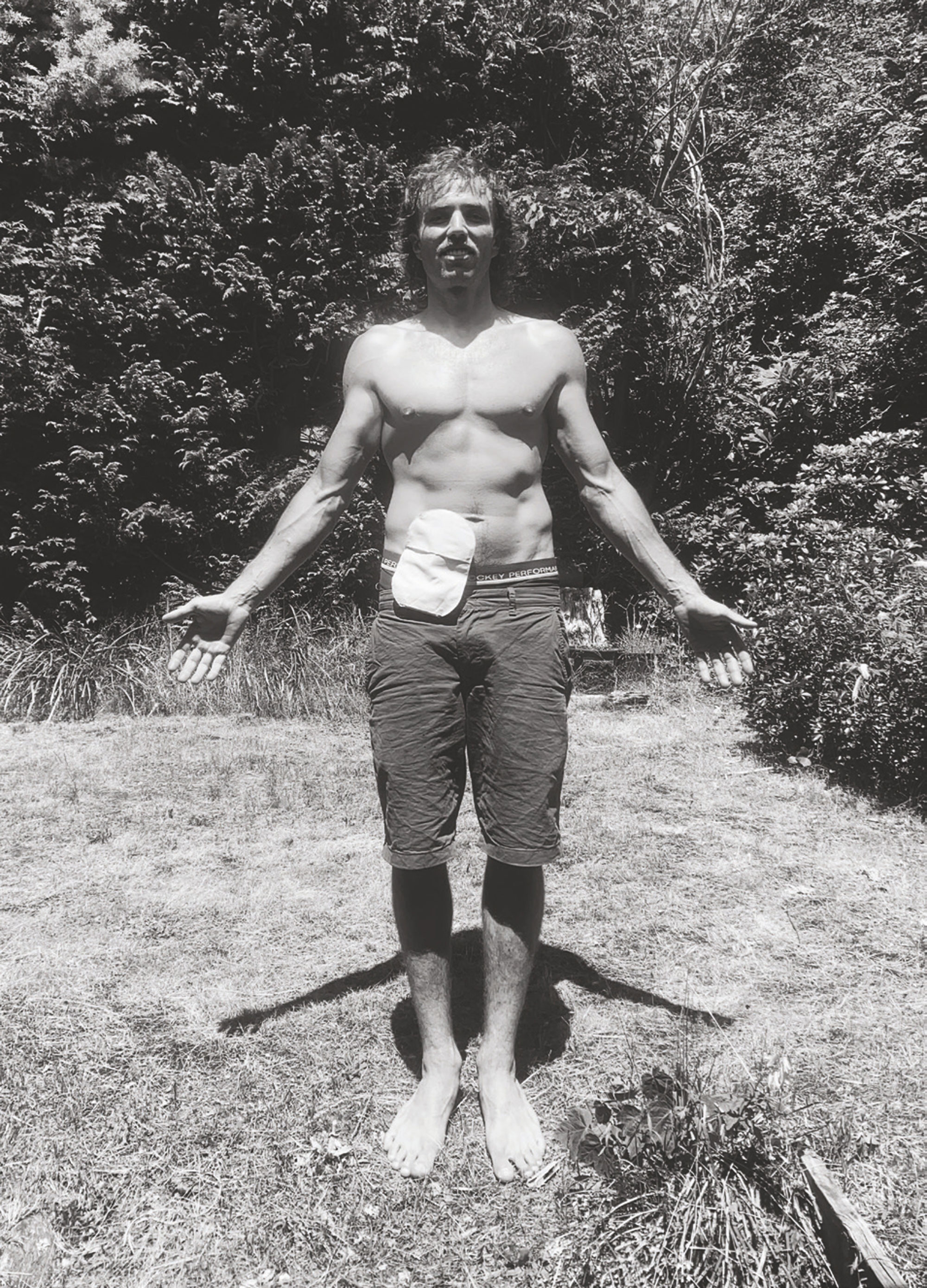
He’s not one to delve too deeply into the dark times of his treatment and recovery, but coming close to death a few times had Sam reevaluating how he looked at most aspects of life, questioning what he wanted to do and how and where he’d like to live.
“I had maybe two years or three years of just kind of, like, blindly thinking that it was getting better, but in my head knowing I wasn’t, and ended up having a huge flare-up. I don’t know what you call it, but it’s basically your body going into shutdown because it’s on its last legs, and you just kind of collapse into nothing. And that wrote me off for a whole year. I just kind of lay in bed and never really got out. I could sort of walk to the letterbox, and that would flog me for three days. I just couldn’t do anything. Yeah, it was pretty wild.”
Unable to work, Sam figured he could expand his horizons. With his previous interest in design and art, he downloaded the Adobe Creative Suite and set to work teaching himself how to use the software. “Every day, I would just sit on YouTube. I’d think of something that I wanted to do, Google it, or watch it on YouTube. Yeah, you can just teach yourself to do design, which was cool, but it also caused a good shift in perspective.”
“The recovery process was crazy. Well, it’s incurable, but you can manage it for the rest of your life. You’re on crazy drugs. It’s all chemotherapy drugs and that sort of thing. The drugs roll you just as much as the actual disease does. I was taking these crazy high dosages, and they wouldn’t operate to take out the part that’s being attacked until you’ve been through every possible drug option. It lasted like a year and a half of trying all these drugs before they’d operate, and I was just getting worse and worse.”
“I was just bleeding out my arse all day, not getting any better. Finally, they said, all right, you can have the operation and cut the affected part out. They ended up having to take out my whole large intestine and give me a colostomy bag. Before I went in for the surgery, my whole body was riddled with scabs because I was so run down. Pimples and all sorts going on, just terrible skin. I woke up from the surgery, and all of that was gone almost instantly. Just straight up. Mum was like, holy hell, I can’t believe this.”
“The recovery process after I got that out was so quick. I’d been over a whole year of having no energy, couldn’t do anything. Then, within a month, I was surfing again and out riding bikes. It was just a night and day difference, which is pretty nuts.”
He’s not one to delve too deeply into the dark times of his treatment and recovery, but coming close to death a few times had Sam reevaluating how he looked at most aspects of life, questioning what he wanted to do and how and where he’d like to live. “It was a whole outlook shift, focussing on making every day really good, which I hadn’t done before.”
“You can just get swept up in this whole rat race; get a good job, get a house, follow the normal path, but it’s not necessarily the happiest or most rewarding. So it was kind of a cool shift to make every day feel like a holiday, which is how the name Vacation Studio came about. It’s about just enjoying yourself, I guess.”
Back to feeling himself, and with a new lens on life, Sam moved to Mount Maunganui in 2015, primarily to chase the surf, but having Rotorua’s trails just over the hill was a huge bonus. He began working for George & Willy, a homewares brand started by a couple of his school friends. “I was doing all their woodworking stuff, building all their desks and their wooden stuff, and looking after the warehouse. Just living a really easy, simple life and doing my design stuff in the evening. Then, in 2018, I became intrigued by Wanaka. I’d always kind of skied a little bit, and had done some riding in summer down in Queenstown. I thought it would be good to come down to Wanaka for six months and see what it’s like. I’ve been here for six years. Never left.”
Like everyone who’s moved to Wanaka, Sam has embraced the outdoor lifestyle, and every moment he’s not creating something or working on a project, he’s out in the mountains. Bikes, skis or feet, Sam’s out there getting amongst it. Regardless of what time of year it is, bikes are still at the top of the list, and although his roots lie in the gravity side of cycling, these days, he’s exploring new horizons on the gravel and backcountry tracks surrounding his new home, keen to push his physical and mental limits.
In 2022, as the South Island’s COVID lockdowns were lifting, Sam took on his first multiday bikepacking event: the Sounds 2 Sounds, from Marlborough Sounds to Milford Sound. “The ability to slow things down and simplify life is underestimated in this fast-paced world. There is so much to see, and the humble bike allows you to see it in such a unique manner. This was my first multiday bikepacking adventure and, as I rolled into Milford Sound and marvelled that I got there with my own two very worn legs, I realised I’d be back. I quite like my bike.”
Riding 1450 km in six days was one way to break new ground and discover what he was really capable of. Riding the road from Te Anau to Milford and not being passed by a single car is an experience he’ll remember forever—and likely no one will ever be able to repeat!
On December 22nd 2023, Sam continued a yearly tradition of breaking personal boundaries and digging deeper to find his limits and took on an Everesting. He was intrigued by the idea and keen to see if it was as brutal as people make out but, more than that, he just wanted to know if he could do it.
Completing seven laps from the Cardrona Valley floor and climbing to the top of the McDougall chairlift at the top of the ski field brought his total ascent to over the 8,848m threshold. Keen to avoid the monotony of descending down the gravel road, he opted to ride down the Peak to Pub trail with a small bomb down the gravel road to finish each lap.
Sam didn’t have a support team or even a plan for how the day should go; he just loaded some food and his bike into the car, drove out to the hill, and got it done – most of it solo. Twenty-two hours and 30 minutes later, he’d knocked it off. Going deeper than he’d imagined, he’d proved to himself that there was another level of suffering he could reach and discovered that even when in immense discomfort, the body kept giving and kept going.
Sam’s riding style lies between two distinct ends of the spectrum. At one end is his gravity side, where he goes fast, rides new lines, and interprets the trail in his own unique way, 100% focused.
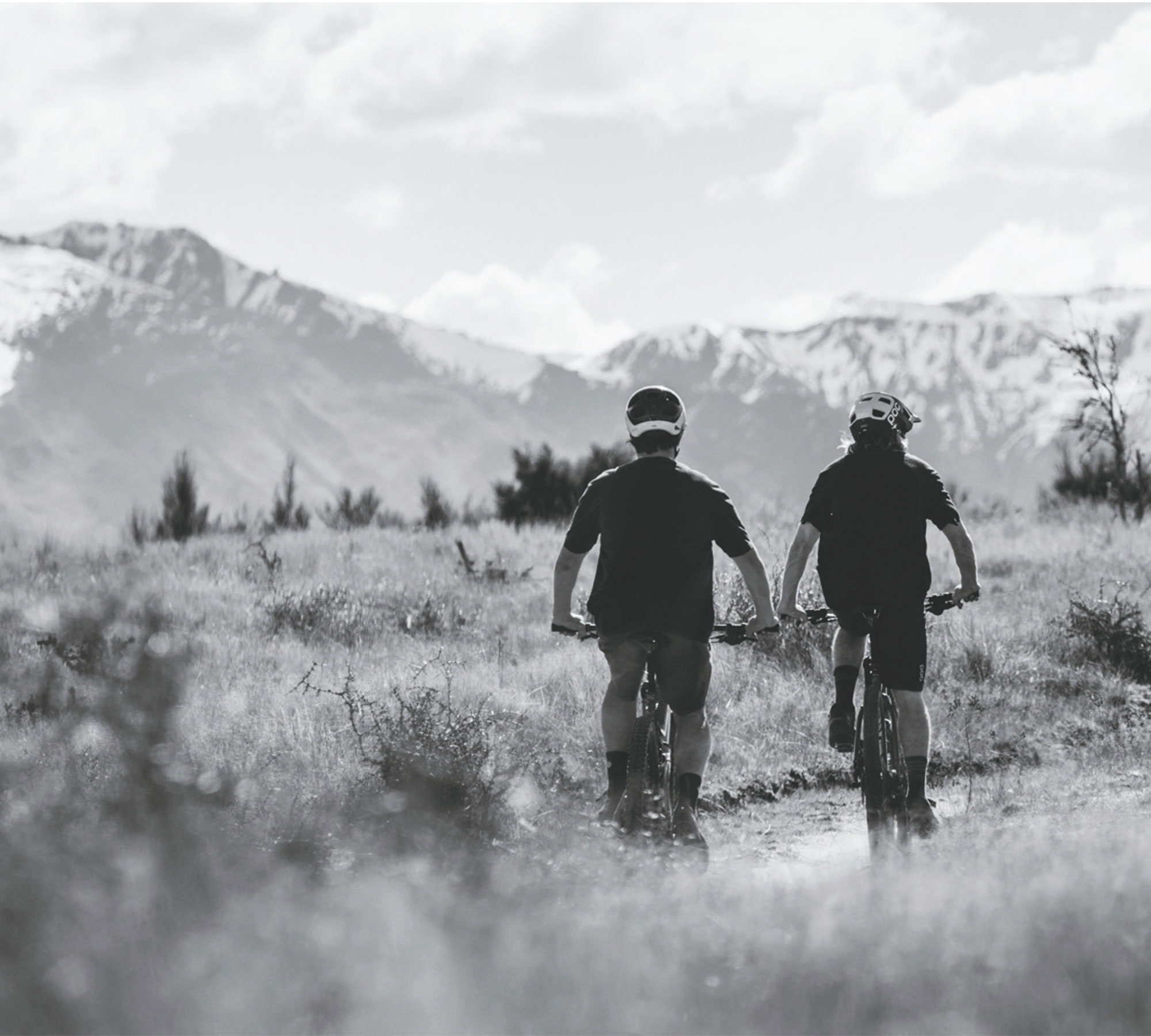
"People always ask me, oh, what do you think about when you go on these 100km rides? And I don't actually even know. I don't even know if I am thinking at all.”
And, at the other end of the scale is a more thoughtful, subdued, and relaxed style, almost contemplative. This is where he exists when riding gravel or simply exploring an area by bike.
“I love the gravel side of things. For me, it’s like just riding a bike purely for the sake of riding a bike. Because mountain biking isn’t that. You get a gravel bike out to simply just go for a ride. You’re so much more present, and for me, it’s so meditative. You’re not thinking about what you’re doing. You’re literally just turning the pedals and looking around. It’s a time when I can really process things. It’s a time when I’m doing my thinking, I guess. People always ask me, oh, what do you think about when you go on these 100km rides? And I don’t actually even know. I don’t even know if I am thinking at all.”
“It’s just so meditative that anything and everything that’s coming at you, you’re taking in, and whether it’s subconsciously or not, it comes back out. I’ll reflect back on that when I’m drawing or looking at something down the track. The way that stream ran, or the way those trees were, or how the light hit that rock or something, it’ll come back at some point. If you’re mountain biking, you probably would just fly past it. You wouldn’t know at all.”
“Even if I’m riding at the same place every week, I can still find a new thing to look at and a new angle on something. I just like looking at things from a different perspective, I guess. And that’s what I like about art, photography, design, and all that sort of stuff. I’m just taking my unique view on things and making stuff, I guess. It’s basically just pure enjoyment out of both (riding and art).”
“I’m just really addicted to making things in a bad way! Every possible thing that I need. I think that’s why I’m so into design, it’s the process of taking an idea and making something that someone then puts on a t-shirt or whatever. “Or whether it’s building stuff out of wood or sewing or painting, or anything that requires patience and an idea turning into a form. That’s what intrigues me the most; taking raw materials and then coming up with something new at the end of it is cool.”
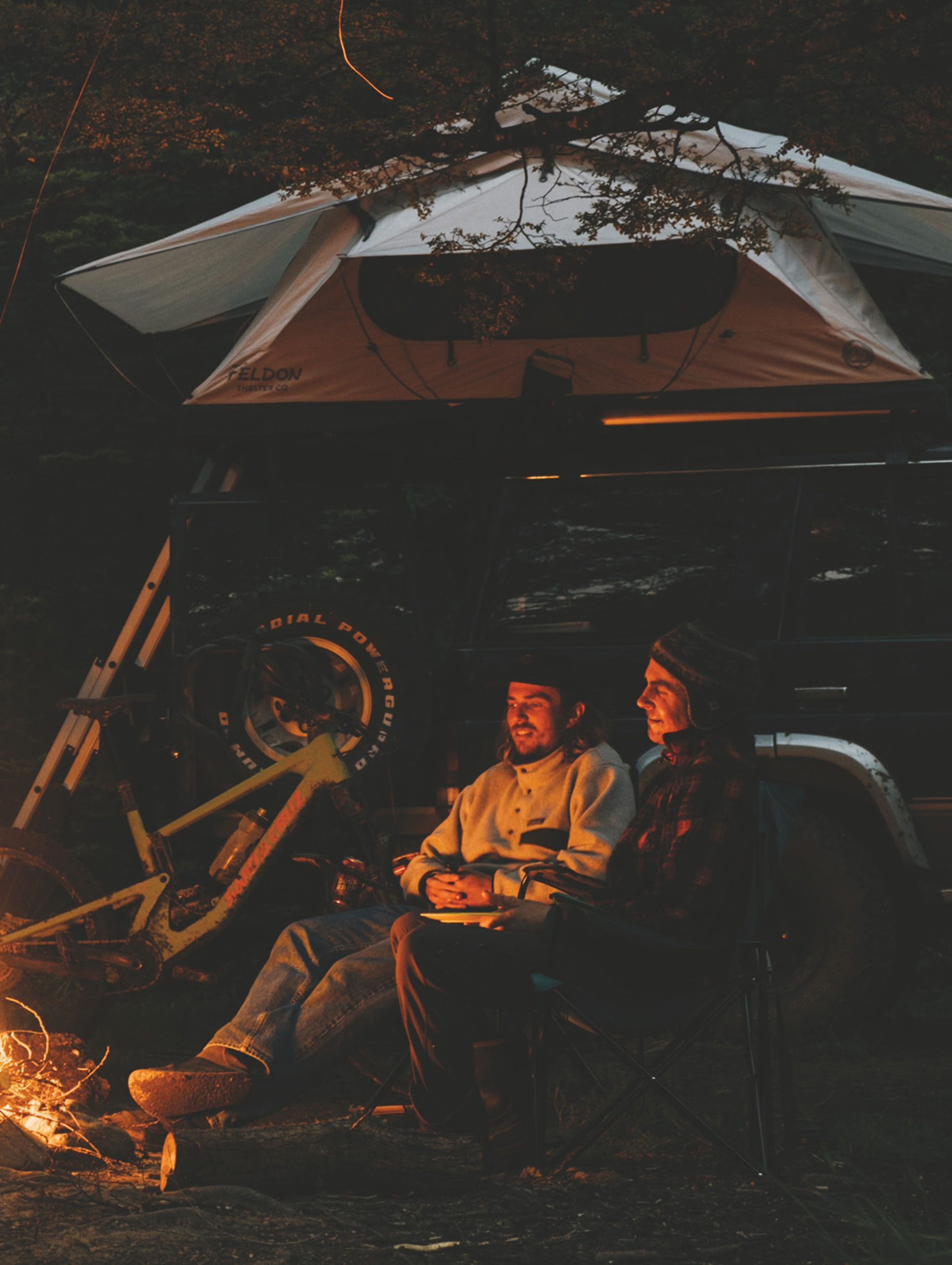
Sam’s a pretty low-key guy. He's happy to go about his business, and although his work is seen all over the country and abroad, he’s still the same old, down-to-earth, chilled guy.
A glance at any of Sam’s bikes confirms his addiction to making things. Each of his bikes has unique and subtle twists that make each his own. Some of his fleet has echoes back to his childhood and the inorganic collection Frankenbikes, – hunting out obscure framesets from back in the days when he was a kid, cobbling them together with unique, often used, parts. From a twenty-six inch single speed dirt jump bike, to high-performing all-mountain trail bikes and retro-commuters, Sams’s bike rack spans the spectrum of cycling genres and a vast timespan.
Sam’s friendly, relaxed, unstructured, and colourful hand-drawn style catches the eye of many an art director. After getting exposure from well-known and large brands, like Pals drinks, among others, his phone has been running hot with enquiries from people who like his style and want something similar to tie their brand to.
“It’s quite hard to replicate yourself over and over. Like for Pals, for example, they’re a big one I’ve done (work for). So many people message me asking, can I get something that’s similar to Pals? I don’t want just to keep repeating myself; it just becomes boring. Whereas, with Good Lids (a Hemp headwear brand), I get the chance to develop myself and try new techniques and styles that I’ve thought about or want to express. I don’t always want to stay in the same rut and become a repetition guy. My Good Lids work is probably the most rewarding. But every client has their own merits. (Good Lids) just trusts me. He’s just like, right, it’s time for another round of designs. You know what to do. I’ll just send back, like three pages of concepts. Probably 50 drawings, and he’ll just pick and choose. But he just gives me complete creative freedom with it, which is pretty cool.”
“I’m pretty lucky to take it from where it was, just working at home, pumping out my own stuff, to now full-time for the last few years. It’s pretty cool.”
Sam’s a pretty low-key guy. He’s happy to go about his business, and although his work is seen all over the country and abroad, he’s still the same old, down-to-earth, chilled guy. All he wants is to live like he’s on vacation, chill and ride his bike while creating some fun projects, whatever they may be. Sounds like some solid life goals to me!
This abbreviated piece written by Sam summarises his thoughts on his condition and gives a window into his quiet intellect.
I have Crohn’s. I have no large intestine, and my small intestine comes out of my stomach and into a Colostomy bag. I’ve had this since 2015 and will have it for the rest of my life. I accept that. It saved my life, but that doesn’t make it my friend. I get tired of it. Some days are good, and other days I cry. Lots of days I’m embarrassed, if my bag leaks in my wetsuit or into my sleeping bag. It’s not fun, and I hide. And I don’t want to.
It has taught me so much about myself, and for that, I’m thankful. Life is short. Try things, be brave, be uncomfortable, be happy, be kind. It’s hard, and I struggle, and I hide, I’m not brave and not comfortable. But I want to try to be better and show others who battle with themselves that they can try too, they can talk, and they can grow. If you want to talk, ask me.
I’ve been to most places in my head, and I know them all very well. This isn’t a sob story. I don’t want sympathy, but I just want to be braver and more comfortable with who I am. I just want to be Sam—me.


